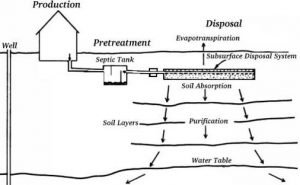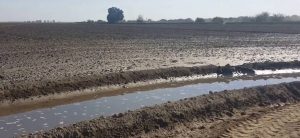Surface Irrigation – Its Working, 3 Types, and Advantages
Surface irrigation is an irrigation method in which water is applied and distributed over the soil surface by the help of gravity and this type of irrigation is most commonly used.
Surface Irrigation can be your best irrigation process to water your plants if applied correctly but because of uncontrolled water distribution, surface Irrigation process is sometimes considered as Flood Irrigation.

In soil with fine texture surface irrigation works best and it requires plenty of groundwater and adequate workforce since it operates without the use of advanced technology.
Mainly, Surface irrigation is divided into border, basin, and furrow systems and without any high-tech applications, this system can be operated. Surface irrigation is most commonly used to deliver water to the fields and well suited to mild or regular slopes.
Working of Surface Irrigation:
In the working of surface irrigation there are following four phases;
Advance Phase:
In surface irrigation firstly, water is supplied to the top end of the fields, and to the field length, it naturally follows and depends on the length of time of the water supply. Then water is supplied to the top end of the fields again and to the pond, it gradually runs off.
Storage Phase:
The time period in this is between the end of the advance phase and the shut-off phase.
Depletion phase:
When the length of the field is submerged, the depletion phase is a short period of time.
Recession phase:
The recession phase is the period of time when the waterfront goes toward the end of the downstream fields.

Types of Surface Irrigation:
There are three main types of surface irrigation as given below;
- Basin Irrigation
- Furrow Irrigation
- Border Irrigation
Basin Irrigation:
In small areas that have a level surface, basin irrigation has been used and by earth banks, these level surfaces should have to be surrounded.
To the entire basin water must be applied and then it is allowed to be infiltrated and into soils, with a low infiltration rate, this type of irrigation is used.

In surface irrigation, the water crops of flat land called basins and it involves flooding a flat area with water and to avoid the flow of water to nearby fields the bunds help in this.
To follow the natural level of the land, fields are typically set up and this irrigation server crops such as rice that is in the flat areas.
Furrow Irrigation:
This type of surface irrigation is quite lengthy and tough but you can get the best harvest if it is done properly.
Furrow irrigation involves the construction of parallel channels which are called furrows and by gravity that allows the water to flow to the rest of the field. For row crops this method is suitable.

In the direction of the predominant slope you have to create small parallel channels in this irrigation and under the influence of gravity water slowly falls down the field. You can use gated pipe, siphon, head ditch, bankless system to apply water and the speed of water is determined by slope, surface roughness, and furrow shape.
Spacing is provided between 0.75m to 2m and on the ridge, crops should always be planted. This type of surface irrigation is applied for crops such as sugar-cane, cotton, and maize, and furrow irrigation mostly depends on the type of soil.
Border Irrigation:
Border irrigation waters land structured as long strips with bunds in separating these sloping strips and through siphons or gates water flows to these borders and this irrigation is used for large forms.
Border irrigation is the combination of level basin Irrigation and furrow irrigation and the field is divided into a number of bays or strips in this system.

To Basin Irrigation usually, bays are long and narrow in comparison, and dimension is kept between 10m to 70m wide and 100m to 700m long, and to the top end of the bay water is usually supplied.
Application of Surface Irrigation:
This system is a low-pressure irrigation system in which water is supplied over the soil and water application is highly efficient and uniform. Water moves out in all directions and moves around the tube and directly applied to the surface of the soil.
In surface irrigation, high-value strong-rooted vegetable crops grow well such as strawberry, tomato, potato, onions, and other vegetables. You should use a variety of drip tubes depending on the soil type, and for controlling water the thickness of drip tubes is responsible.
It is must have a filtration unit in the surface irrigation system and the filtration system is actually a sand media filter.
Advantages of Surface Irrigation:
There are the following advantages such as;
- This method does not need any modern technology and management is quite easy. You can do it if you have local traditional knowledge.
- This method does not need high financial support and also with small lands it is beneficial.
- This is the best process if you have short time water supplies.
- This type of irrigation just needs longer tubes if the drainage system is far.
- This method can utilize rainwater and is a nature-friendly system.
- In a low filtration rate, it also works effectively.
- No energy cost needed in this method.
- In sloping lands and long fields, this method is commonly used.
- In soil, its minimum filtration rate makes leaching of salts.
- It is not affected by heavy rainfall and makes good use of rainwater.
Disadvantages of Surface Irrigation:
There are the following disadvantages such as;
- Surface irrigation requires an only level and flat land.
- Not suitable for big fields.
- On soil with a high filtration rate, it is not applicable.
- In this method, plants are always covered with water even when plants do not need water.
- Limited space gets more water than required sometimes.
- There is no drainage outlet in this.
- Draining excess water from basins is difficult.
We Love Cricket
